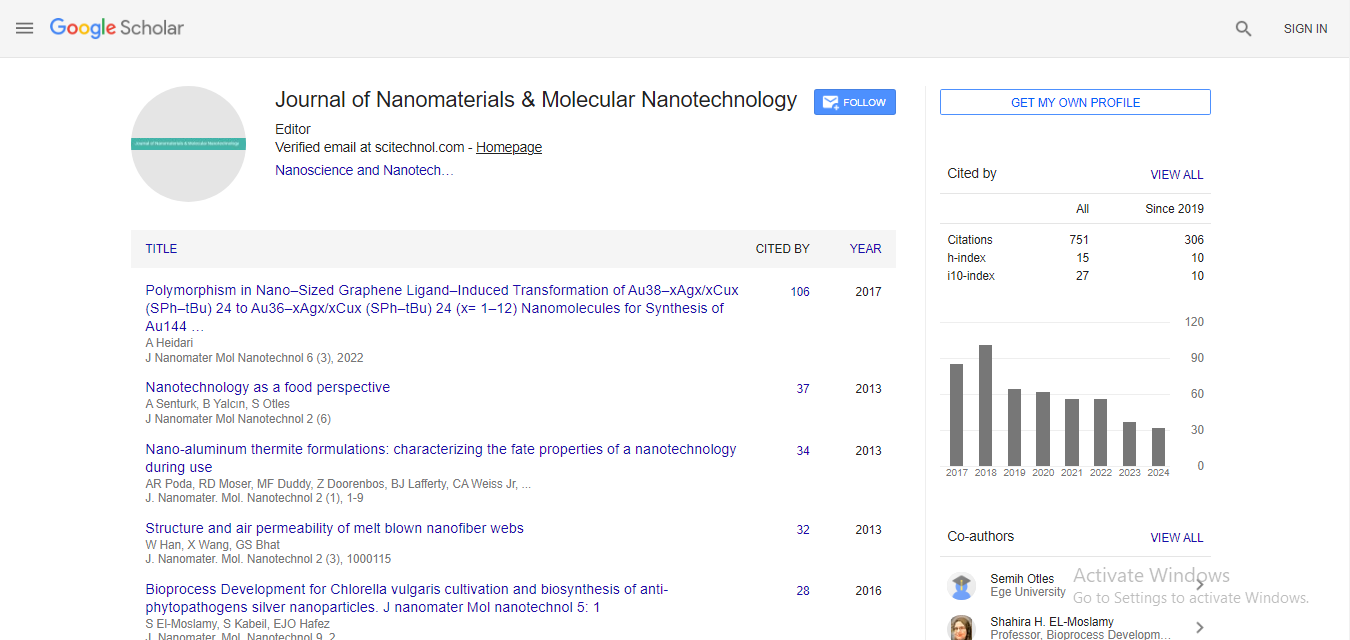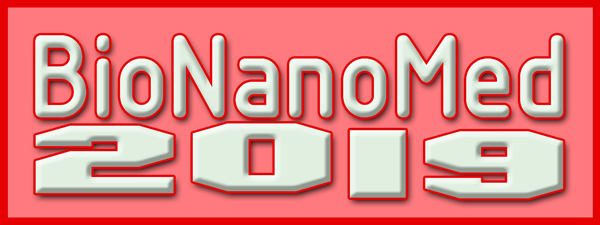Perspective, J Nanomater Mol Nanotechnol Vol: 13 Issue: 6
The Impact of Nanolithography on the Development of Advanced Photonic Circuits
Ricardo Henrique*
1Department of Physics and Materials Science, University of Luxembourg, Luxembourg
*Corresponding Author: Ricardo Henrique,
Department of Physics and Materials
Science, University of Luxembourg, Luxembourg
E-mail: ri.que@ul.edu.lu
Received date: 22 November, 2024, Manuscript No. JNMN-24-156143;
Editor assigned date: 25 November, 2024, PreQC No. JNMN-24-156143 (PQ);
Reviewed date: 09 December, 2024, QC No. JNMN-24-156143;
Revised date: 16 December, 2024, Manuscript No. JNMN-24-156143 (R);
Published date: 24 December, 2024, DOI: 10.4172/2324-8777.1000446
Citation: Henrique R (2024) The Impact of Nanolithography on the Development of Advanced Photonic Circuits. J Nanomater Mol Nanotechnol 13:6.
Description
Nanolithography, the process of creating nanometer scale patterns on substrates, has revolutionized the fabrication of photonic circuits, driving advances in optoelectronics and quantum technologies. As the demand for smaller, faster and more efficient photonic devices increases, nanolithography has developed as a major tool in meeting these requirements. This explains the impact of nanolithography on the development of advanced photonic circuits, focusing on its role in enabling miniaturization, enhancing performance and facilitating the integration of photonic components. It highlights key techniques such as Nano Imprint Lithography (NIL) and Extreme Ultra Violet (EUV) lithography and future directions in the field.
Photonic circuits, which use light to process information, have become a central technology for applications ranging from telecommunications and high-performance computing to medical diagnostics and quantum computing. The drive for higher performance and reduced size in photonic devices has increased the need for precise patterning technologies that can operate at the nanoscale. Nanolithography, which allows the creation of complex nanoscale features on substrates, has been a base in the development of integrated photonic circuits. It allows for the fabrication of components such as waveguides, modulators and photodetectors, which are important for the functioning of photonic circuits.
Nano Imprint Lithography (NIL) is a technique that has significantly influenced the fabrication of advanced photonic circuits. NIL uses a mold to physically imprint nanoscale patterns onto a substrate, which can be done at relatively low temperatures and pressures. This technique offers several advantages, including high resolution, low cost and high throughput, making it particularly suitable for the mass production of photonic devices.
NIL has been successfully used to create high-quality photonic components such as waveguides, optical cavities and resonators. It has also enabled the development of photonic crystals, which are structures that control the flow of light at the nanoscale and have numerous applications in telecommunications and sensing. With NIL, researchers have been able to fabricate photonic circuits with increasingly smaller dimensions, leading to more compact and efficient devices.
Extreme Ultra Violet (EUV) lithography is another advanced technique that has had a significant impact on the fabrication of photonic circuits. EUV lithography uses wavelengths of light in the extreme ultraviolet spectrum (around 13.5 nm) to pattern materials at a resolution far beyond traditional optical lithography. This has allowed the creation of photonic devices with sub-10 nm feature sizes, which are major for the reduction of photonic circuits.
Electron beam lithography (e-beam) is another technique used in the development of advanced photonic circuits, particularly in research and prototyping. E-beam lithography involves the use of focused electron beams to write custom patterns onto a resist-coated substrate. The high resolution achievable with e-beam lithography is ideal for creating complex photonic structures such as plasmonic devices, nanolasers and metamaterials.
Nanolithography has allowed the continued reduction of photonic circuits, allowing for the integration of more components on a single chip. The ability to pattern devices at the nanoscale has resulted in photonic circuits that are not only smaller but also faster and more energy-efficient. Smaller photonic components can achieve higher performance, such as faster light propagation and lower signal losses, contributing to the development of high-speed communication systems and compact sensors.
Conclusion
Nanolithography has had a significant impact on the development of advanced photonic circuits, enabling the miniaturization, integration and performance enhancement of photonic devices. Techniques such as NIL, EUV lithography and e-beam lithography have facilitated the creation of increasingly complex and efficient photonic components. As these technologies continue to evolve, they will prepare for the next generation of photonic circuits used in telecommunications, computing, sensing and quantum technologies. The continued development of nanolithography will be essential for addressing the challenges of resolution, scalability and material integration, driving the future of photonic circuit technology.
 Spanish
Spanish  Chinese
Chinese  Russian
Russian  German
German  French
French  Japanese
Japanese  Portuguese
Portuguese  Hindi
Hindi 



